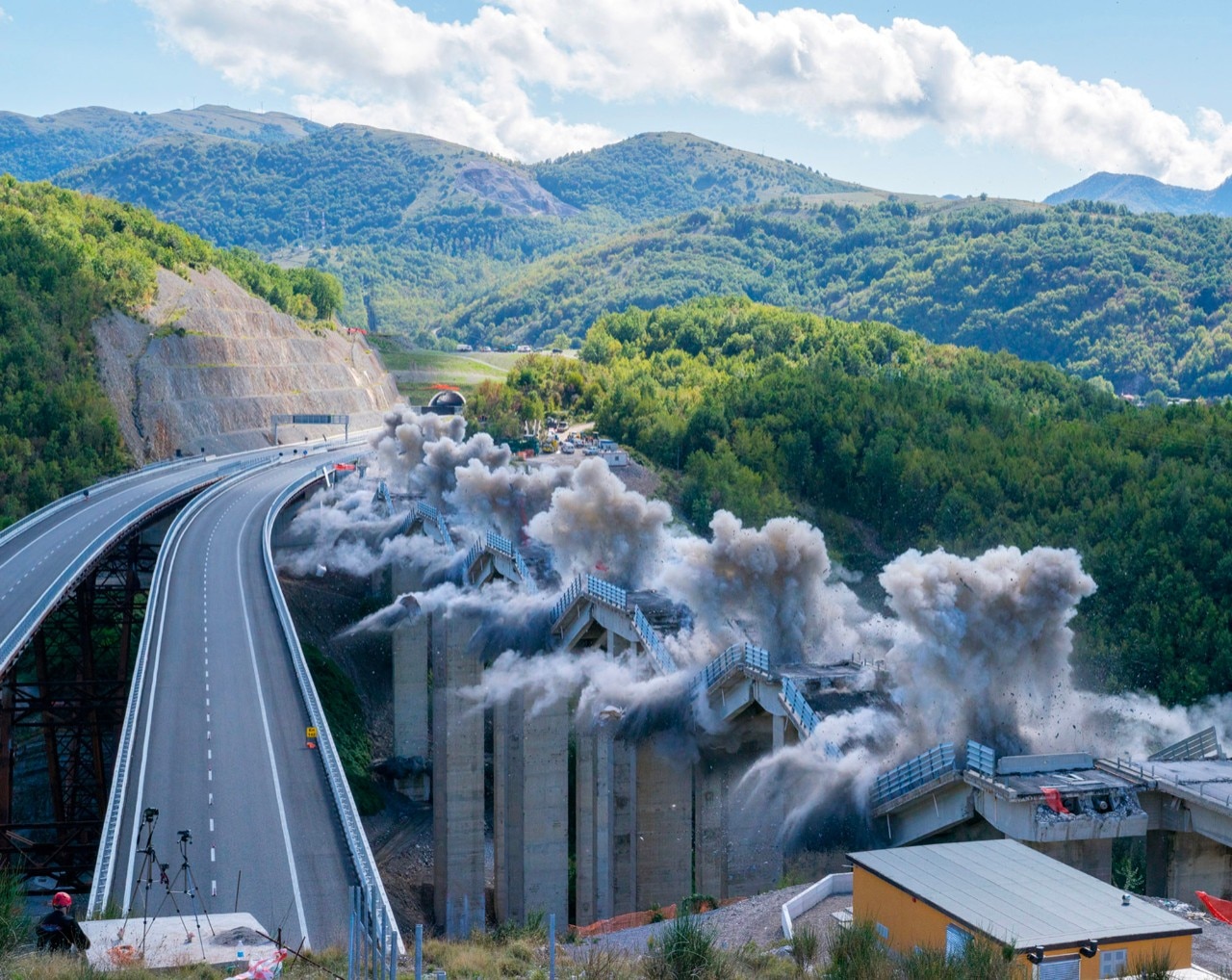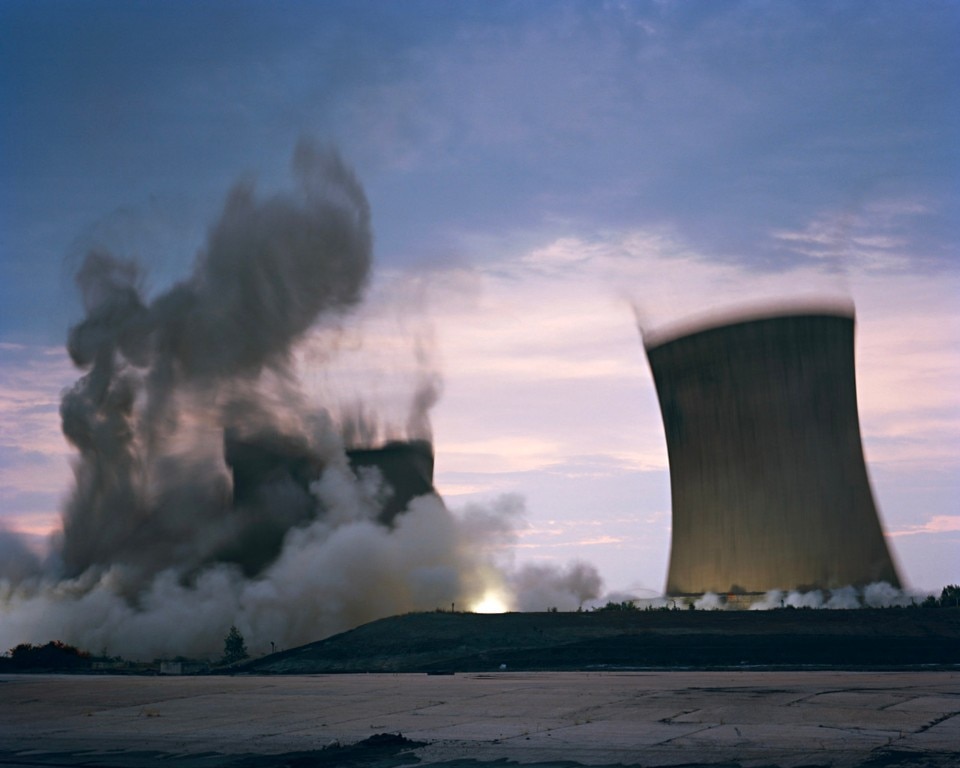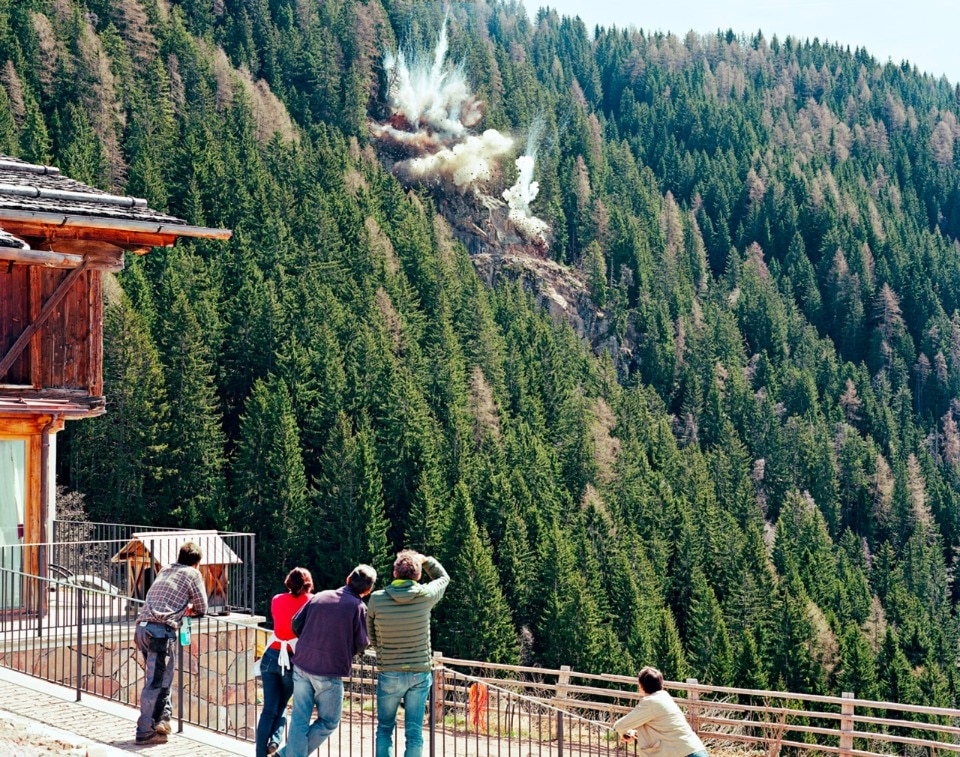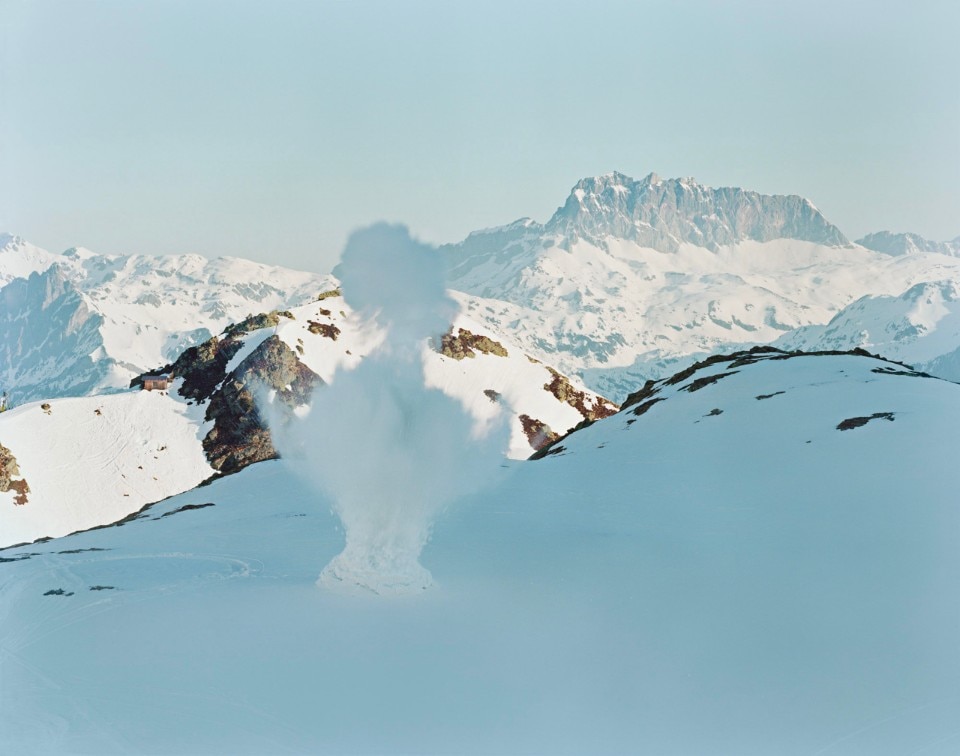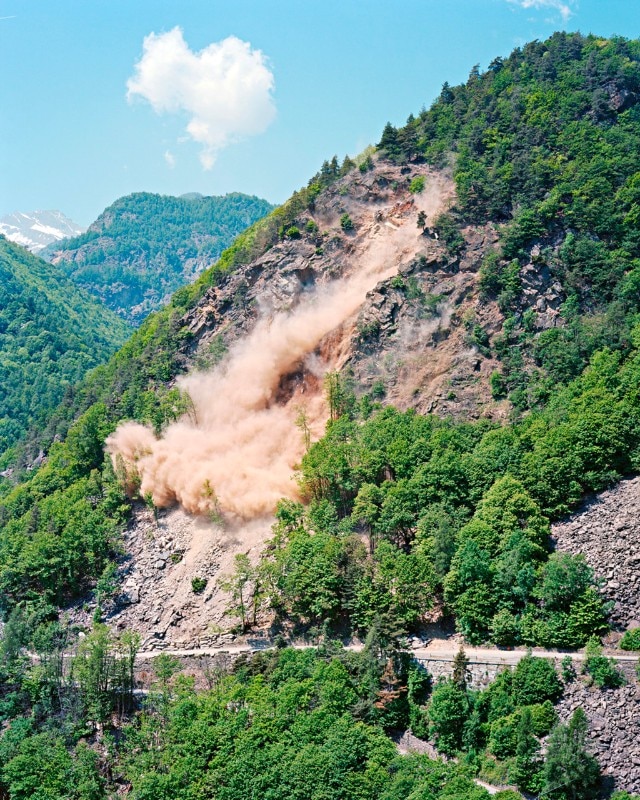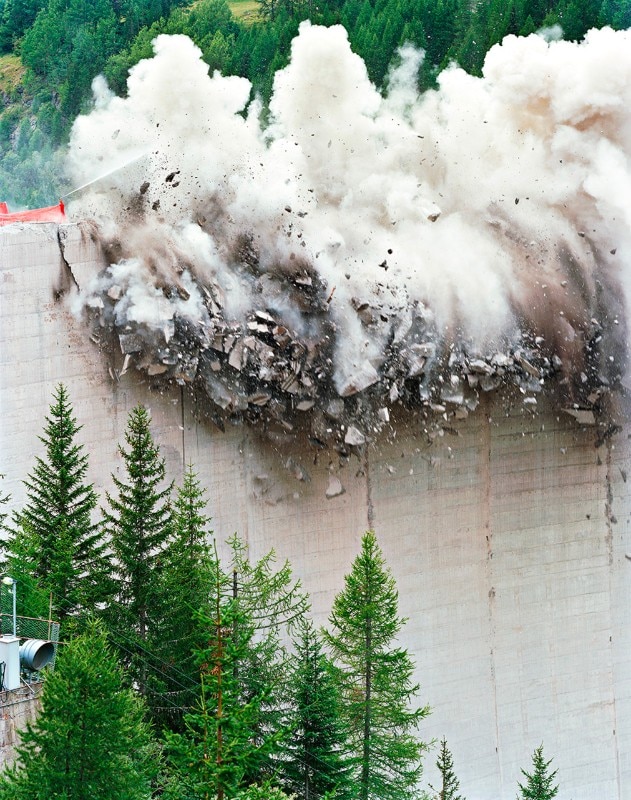A landscape often changes in a precise instant that determines its before and after: the explosion. The photographs that Andrea Botto has taken over fifteen years of work focus precisely on this rapid and, as far as controlled, unpredictable and unrepeatable action.
“They are images that have to do with the use of explosives in the civil sphere,” Andrea Botto explains, “so the demolition of buildings, the artificial triggering of avalanches, digging, all the way to pyrotechnics.”
His book KA-BOOM The Explosion of Landscape (Èditions Bessard, Paris 2017) has become a subject of study for those interested in reflections on landscape beyond photography. Until January 2023, a selection of these photos is presented in two exhibitions: in Andrea Botto’s solo exhibition in Innsbruck named “Landscape as Performance” – curated by Hans-Joachim Goegl – and in the group exhibition “Paesaggio dopo paesaggio” – curated by Matteo Balduzzi, at MuFoCo in Cinisello Balsamo.
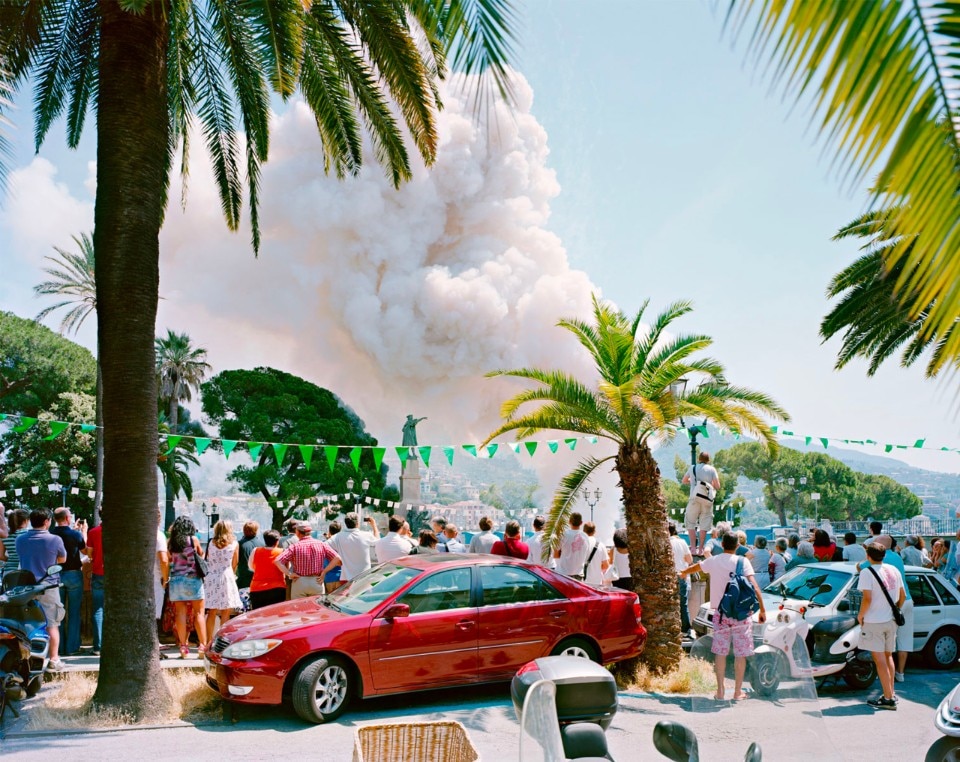
“The landscape of these photographs is a form of performance. In fact, the real protagonists are the work preparation, the suspense with all its tension, the moment of detonation, up to the plastic effect of the dust cloud that is released after the explosion, with all the unpredictable change we experience. The epicenter of all these performative aspects is the detonation – a very special event because, once set in motion, it does not allow for any return.”
He is not the photographer of the explosions, then, but of the before and after this instant. “The explosion remains an invisible moment, my work is rather on the theme of catastrophe as a watershed in our perception of the landscape.”
The term “instant” often recurs during the conversation with Andrea Botto, and when talking about photography the mind cannot but go to the whole tradition of 20th century reportage, with its “decisive instant” and the ways photography has tried to freeze it. “No, we are far from the rhetoric of the decisive instant,” Andrea Botto says, “I appreciate that kind of reportage, I come from landscape photography, but the detonations shown in my photos are a subversive response to both of those traditions. I said to myself, I have to be the one to choose the moment.” In fact, it is not always clear that the decisive instant was often found later, with the selection of the image over a series of shots, those contact-sheets that became in turn the object of study as much as the chosen shot.
Andrea Botto does not produce sequences even though he would have all the tools at his disposal, and in this he has made his life difficult in an already difficult situation: he uses a large 4x5 format camera, so it is impossible to go by trial and error: one explosion, one photograph. In short, from the subject to the plate, all the elements of these images are unrepeatable.
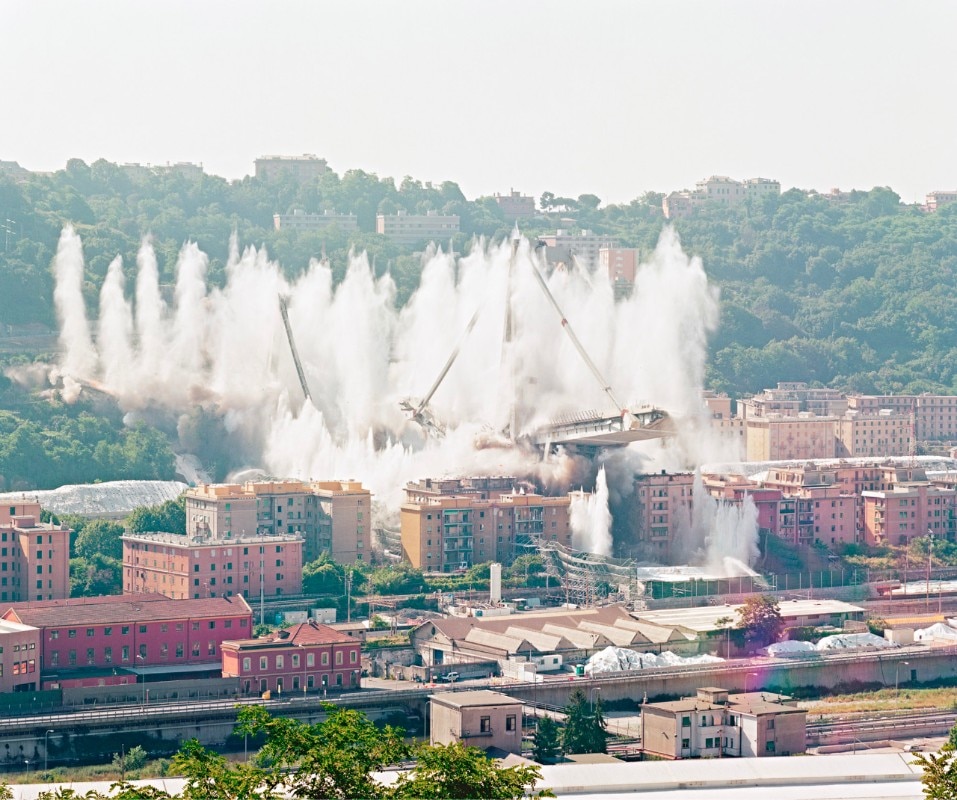
“Therefore, a very important part of the work is the preparation,” the photographer explains, “it is a preparation in close contact with all the technicians who deal with the explosion. Meanwhile, one has to know where it will happen, then one has to carefully study the viewpoint, place the camera, and finally wait even several hours before the event, learning to manage the anxiety of waiting and trying to predict the outcome of the image I have in mind.”
Indeed, because in these cases it is crucial to reach the location with a clear idea of what you want to achieve. Moreover, most of the time it is about choosing the right shooting distance, not only for safety reasons, but because distance is the element that determines the true meaning of the photo. The controlled demolition of the Morandi Bridge abutment is a clear example of this choice made by Andrea Botto. The bridge is not the main subject, as was often seen in all the news photographs of that day, but he opens up to the landscape to put the bridge in its context, also filming the crowd watching the event in the distance.
“There is a difference between environment and landscape,” Andrea Botto explains, “the environment is a system of relationships that exists regardless of an observing crowd, the landscape exists only if the human eye looks at it. There is a contemplative aspect to it, but suddenly, an event that overturns its order may come along.”
Demolition has always been the taboo not only for contemporary architects, but also for those who photographed that man-modified landscape. It was the addition, the insertion of new elements into a more or less natural context (all landscapes today have already been modified by man in some way), that determined the event to be photographed.
For decades the subject was building, not destroying. “Until people began to understand that you cannot build without first destroying,” Andrea Botto says, “and my work is precisely about this process of transformation, of creative destruction.”
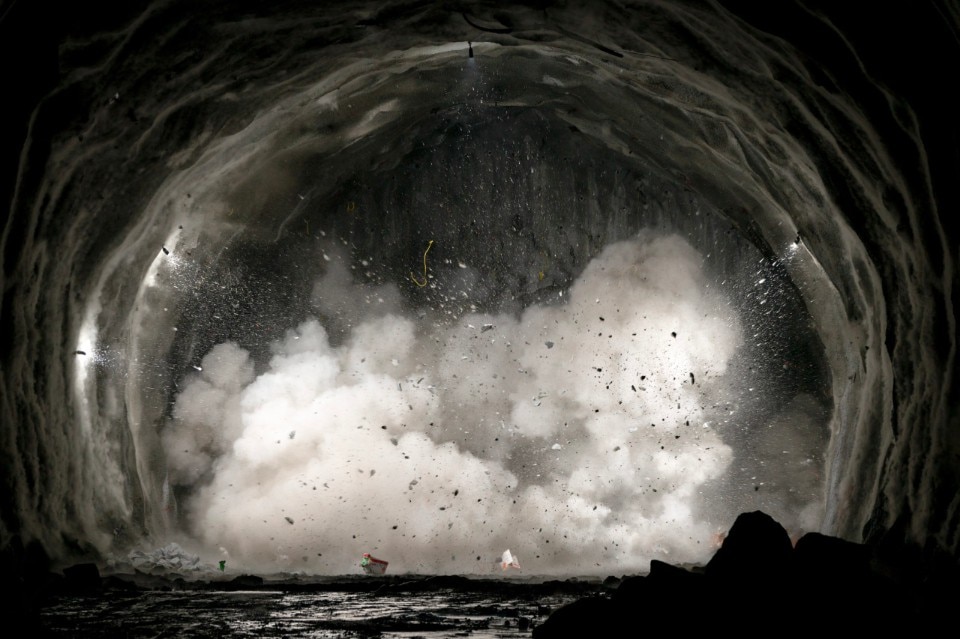
Those who observe these images cannot help but wonder: why does the explosion have this aesthetic power? How does this destructive event become something “beautiful”?
“There is no definite answer to this question,” Botto says, “meanwhile, it is an event where art and science meet. Science calculates and designs every aspect of the controlled explosion. Art, for its part, puts in all the unpredictability of outcomes, but it acts by successive approximations too. Both arise as creative processes to overcome limits.”
Then there is the technical difficulty. Andrea Botto, during the construction phase of the Brenner Base Tunnel, took the first photograph of an underground explosion, that is, the place where technical obstacles are extreme. Before this photo, there were only frames taken from video (here it is, the sequence). “When you photograph underground, you are taking a photograph of an instantaneous event in the dark,” Botto explains, “so I had to work out a system that would allow me to solve several problems. I designed a concrete shelter to protect the camera, connected to a system of flashes installed on the vault of the tunnel, potentially expendable at the moment of the explosion, and a device that would allow me to decide the delay of the shot, by half a tenth to a tenth.”
The peculiarity is that the camera is activated by the detonators themselves, “and in this a further performative action is performed,” Botto continues, “in which the photographer merges with the shotfirer, who, by pressing the exploder as if it were a shutter button, triggers the muzzle blast and, at the same time, the photographic process.”
Critic Riccardo Venturi, in the text linked to the Innsbruck exhibition, shifts the focus to a detail: the explosion goes boom, Andrea Botto’s work is to give an image to this sound. “A sound that is delayed,” the photographer adds, “the boom comes later than what we see, and this is not minor when it comes to taking a photograph. Often the shot happens precisely because of the boom, which is why I say you always end up photographing the instant after the event. What we see in all these images is not the explosion, it is its effects. As in a scientific experiment, we know the cause through its effect.”


